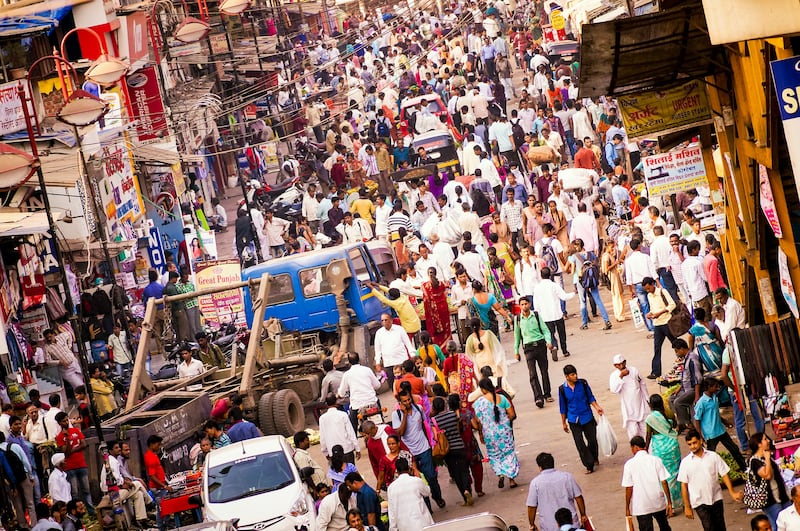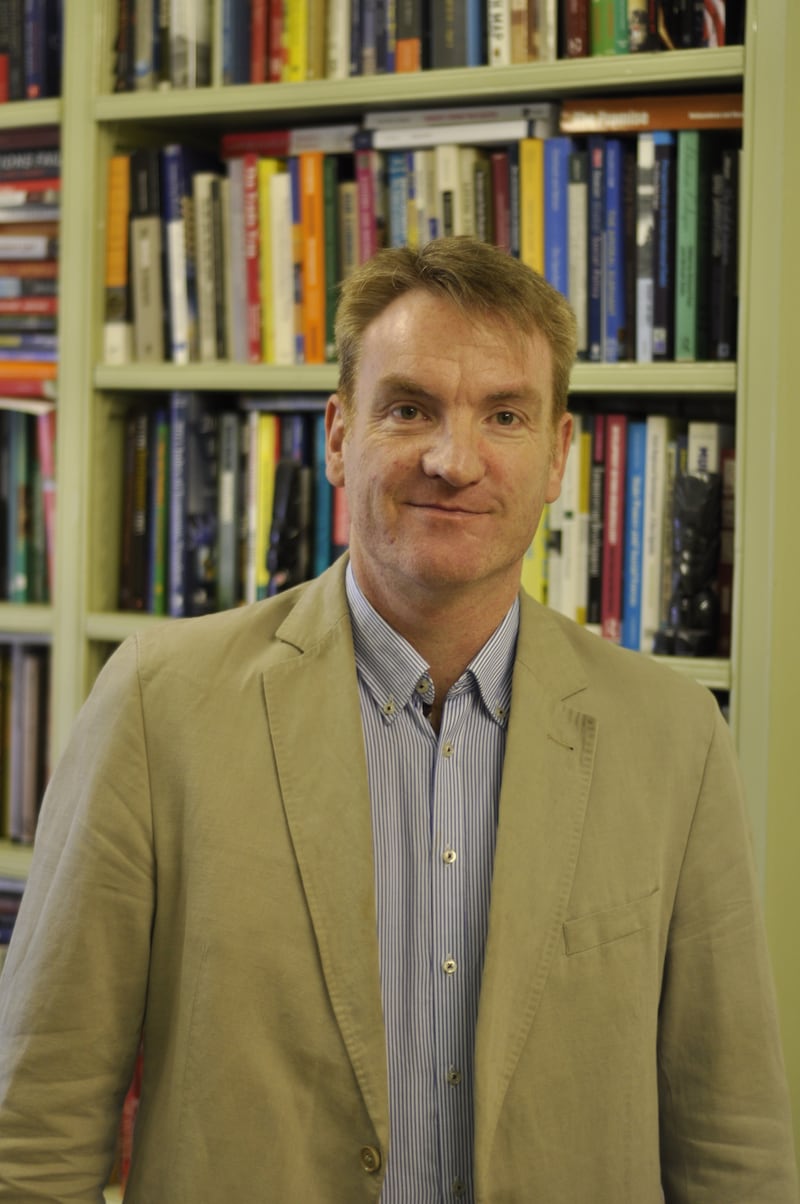Sometime in the coming days – probably on Tuesday, November 15th – the world’s population will reach eight billion.
It continues to increase by roughly 140 people per minute, with births outweighing deaths in most countries.
The issue is already surfacing at Cop27 in Egypt as 196 countries are attempting to find ways to curb temperatures on a rapidly warming planet.
“Explosive population growth sees a 19 billion tonne CO2 spike” was the take of NGO Population Matters – highlighting increasing population as one of the largest factors driving record levels of carbon emissions.
It is easy to catastrophise and say planet Earth cannot cope with a relentless rise in global citizens at a time of climate breakdown and collapse in nature – when human activity is the dominant influence on the environment.
But it is a complex issue not helped by false claims that “the world population is accelerating towards collapse” – one of Twitter boss Elon Musk’s infamous tweets on the issue – and hysteria and ignorance surrounding demographic trends, including talk of closing borders from populist leaders in autocratic countries.
Growth dilemma
Most experts agree population increases will continue, albeit at an ever-decreasing rate, until the Earth’s population reaches its ceiling, pauses and begins to contract, according to the 2022 World Population Review (WPR).
Steadily improving global standards of living are responsible for decreasing rates of population increase. As wealth and quality of life increase, they contend, the average family size will shrink and population growth will steadily slow and eventually stop.

However, others maintain poverty, inequality and urbanisation will cause a growth increase, particularly in countries in sub-Saharan Africa and parts of Asia, where population growth is already much higher than the global average.
Still others predict a decrease stemming from much bleaker causes, ie the current world population is unsustainable in the long term and natural resources are insufficient to feed such a large population or sustain the global economy at its current scale.
The rate of population growth has been slowing. This trend is expected to continue until the rate of population growth reaches zero (an equal number of births and deaths) in about 2080-2100, peaking at about 10.4 billion people, WPR predicts.
[ Reducing world population may be a bad ideaOpens in new window ]
Tracking the exact number of births and deaths in every country and territory in real time – and maintaining a precise tally at any given moment – is logistically infeasible. Instead, population scientists use sophisticated mathematical models to create detailed estimates and projections, which countries can use to plan for future generations.
China is currently the most populous country in the world with an estimated 1.42 billion people. India, with a population estimated to be 1.41 billion people, is expected to be the most populous country by 2030.
While Russia and Japan will see their populations decline significantly by 2050, most countries with populations of more than 100 million are expected to continue growing until at least 2050.
Greying world
Global life expectancy reached 72.8 years in 2019 – almost nine years longer than in 1990. This is projected to reach 77.2 years by 2050. Significant factors boosting life expectancy include ability to reduce AIDS/HIV impacts and other infectious and non-communicable diseases.
As a result, most countries are seeing considerable growth in people over 65. The percentage of over-65s is projected to rise from 10 per cent in 2022 to 16 per cent in 2050; twice the number of children aged under five.
While the world is struggling with huge inequality, the climate crisis, and conflict-fuelled displacement and migration, it should not engage in “population alarmism”, Dr Natalia Kanem, director of the UN Population Fund, warned in advance of reaching the eight billion milestone.
She urged countries not to panic but instead focus on helping women, children and marginalised people who are most vulnerable to demographic change. “I realise this moment might not be celebrated by all. Some express concerns that our world is overpopulated, with far too many people and insufficient resources to sustain their lives. I am here to say clearly that the sheer number of human lives is not a cause for fear,” she said.
TCD professor in geography Pádraig Carmody dismisses talk of an out-of-control population surge, because debate can become racialised and the reality is more nuanced.

Africa is in many ways the continent that reveals most about the complexities and challenges of population growth. About 70 per cent of its population is under 30. The average (median) age on the continent is 19.7. By some estimates, by the end of the century, four out of 10 people on Earth based on current trends will be African – 17 per cent of the global population. “That’s a huge level of growth,” he acknowledges, though it can bring big opportunities.
Africa, he adds, is actually in a “slow – some would say stalled – demographic transition”. This in the context of the demographic transition theory, ie where societies progress from a pre-modern regime of high fertility and high mortality to a post-modern regime of low fertility and low mortality.
African population trends are highly differentiated, he notes. The fertility rate per woman is still more than four; in some countries it’s six. “Some countries seem to be going through a more rapid demographic transition. Others have stalled,” he explains. It very much depends on economic development; women’s empowerment, availability of contraception and related knowledge, education/literacy levels and extent of urbanisation.
It is the last continent that is still primarily rural though an urban revolution is beginning to take hold.
The population policy of governments is a big factor. In Uganda, President Yoweri Museveni has “a kind of pro-natalist policy, believing Uganda will be a strong country if it has a big population. He has encouraged a higher birth rate and they’ve also had a very generous refugee immigration policy.” But Carmody stresses: “I don’t think population is the biggest problem we’re facing globally.”

Rwanda has had a very rapid decline in fertility rate driven by government directive. “They’ve really pushed the family size reduction and contraception as part of their economic development strategy.”
People talk a lot about “technological overpopulation”, he adds, “the idea that it’s people like you and me who are the problem driving our cars, consuming a lot of energy and resources”. That doesn’t apply to Africa. Its carbon footprint is still within planetary boundaries, he points out – accounting for just 4 per cent of global emissions.
“Very rapid population growth is a big problem, particularly if you have very limited resources to provide housing, infrastructure, food, all of those kinds of things that populations need,” Carmody says.
But there are upsides from population growth too. It can spark innovation, forcing change in doing things differently. It “is symptomatic of poverty largely. And it’s not primarily a cause of some of the big environmental problems”.
Africa generates fewer than two tonnes of carbon per annum per person, which is sustainable. Though South Africa, because of dependence on coal, and Nigeria ,being a big oil and gas state, are big emitters.
Most African economies are green economies. They have high levels of poverty that feed into high levels of population growth and resource overconsumption, as well as problems such as lack of housing – damaging the ecological footprint of cities and their hinterlands.
There is huge contrast with what is happening in China, which is encountering a dramatically increased dependency ratio because of its one-child policy. “That’s going to be a massive problem for China going forward, that there aren’t a lot of people of working age to support a greying population,” he adds.
These big issues, he suggests, call into question “hard border philosophies” applied in some parts of Europe and China, when they require more workers while other countries have surplus labour.
Europe
Many European countries, such as Italy, have shrinking populations yet its new prime minister Giorgia Meloni has talked about instituting a naval blockade based on the Trump mantra “a nation without borders is not a nation” – and during the Ukraine crisis some border guards in Poland reportedly stopped black people while letting white people through without much problem.

The US department of defence some years ago highlighted risks from the “youth bulge” in the developing world leading to poverty and unemployment, warning it was fertile ground for radicalisation. Carmody believes it’s fundamentally an economic issue, while people will respond to financial incentives. “But again, you have to think about what factors produce rapid population growth.”
Population is among “the grand challenges”, but largely driven by other trends, so humanity should be more concerned with mitigating climate disruption and trying to create decent jobs.
Irish trends
Ireland is an exception in the developed world because of its population growth, the proportion of its young people and high fertility rate, confirms Mary Gilmartin, professor of geography at Maynooth University. CSO projections suggest sustained increases in population over the next 30 years; rising to 5.6-6.7 million by 2050 – it uses a variety of models using different birth and migration rate scenarios.

The State’s population will age due to reduced fertility, she says, but will take time to catch up with the rest of Europe in the second half of the century. Population fall will be due to economic factors; concerns about a place to live and uncertainty. As Ireland ages, this will change “the dependency ratio” with fewer people to support people not working.

Equally, reunification of Ireland, if it happens, is likely to have a significant impact on population structure and profile, she says.
“We have seen concern about population affecting fertility rate for decades,” Gilmartin says – worry about the planet including the climate crisis is likely to be a contributing factor, she accepts, though that is hard to quantify.
Continuing net inward migration will be a positive, she predicts, as immigrants are younger, pay taxes, join the workforce and fill gaps in services; contributing to society and balancing the country’s age mix.
Ireland will nonetheless continue to stand out in having a higher proportion of outward migration compared with other countries, a trend ameliorated by inward migration of late.
But Gilmartin says there are indications people want to emigrate at levels she has not seen before – which is reflected among students in her classes. The reasons they cite are cost of living and housing, “though they face these issues in most of the traditional locations they are planning to go, ie to English-speaking countries”. While all might not leave, she believes this is possibly due to “less hope” compared to previously.
On whether the national plan – a blueprint for 2040 – needs a radical overhaul, she points to poor planning when factoring in rising population up to now, where “the healthcare system has not kept pace with population increase at all”; there are struggles in education including third level and planning for housing, which has been “a disaster”.
Urban development has been a failure with, for instance, hotels and student accommodation blocks being built in Dublin city centre rather than permanent places to live, Gilmartin says. While transport planning has slightly improved, overall “planning for population growth has not been coherent and has not been effective enough”.
The milestone of “the eight billionth member of our human family” being born raises immense issues about living within planetary bounders; how best to tip the balance towards halting emissions and containing global temperature rise so risk of catastrophic climate breakdown is minimised. That includes a transition to sustainable growth where wellbeing and basic standards of living have greater priority across the world.
What UN secretary-general António Guterres said at Cop27 in the context of climate action equally applies to population: “How will we answer when ‘Baby Eight Billion’ is old enough to ask: What did you do for our world – and for our planet – when you had the chance?”
A world of eight billion people – in numbers
- An estimated 140 million babies will be born this year
- In 2020, the global population fell for first time since 1950 (by 1 per cent)
- More than half of expected population growth between now and 2050 is expected to come from eight countries: DR Congo, Egypt, Ethiopia, India, Nigeria, Pakistan, the Philippines, and Tanzania
- Many African countries are expected to double their populations in coming decades as fertility rates and birth rates rise due in part to advancements in healthcare and decreased infant mortality and malnutrition
- Ireland is the 125th largest country in the world based on population – 5,066,569 (as of November 4th) – surpassing five million (in 2021 for the first time in 170 years)
- Global population is expected to be 9.7 billion in 2050 – nearly two billion more than today’s figure
- Vatican City/Holy See is the smallest country in the world – 510 people
(Sources: UN 2022 World Population Prospects; World Population Review - September 2022, Worldometer analysis of UN data)
Population highlights in history
Before the invention of agriculture, the human population was estimated to be about 15 million people at most.
The world population in 2017 (seven billion) was roughly equal to a full 6 per cent of the estimated 110 billion people who have ever lived.
The introduction of agriculture and gradual movement of humanity into settled communities enabled the global population to increase gradually to about 300 million by AD 0.
The Roman Empire, regarded as the strongest empire the world has ever known, probably contained about 50 million people at its height – nearly 20 million fewer than the population of the UK today.
The world population did not reach the one billion milestone until the early 19th century. As the industrial revolution took hold and living standards improved, the rate of population growth increased considerably. Over the next hundred years, the population of the world doubled, reaching two billion in the late 1920s.
Over the past century the planet’s population has more than tripled in size, largely due to improvements in diet, sanitation and medicine, especially compulsory vaccination, which have improved life expectancy and decreased infant mortality rates all over the world.













